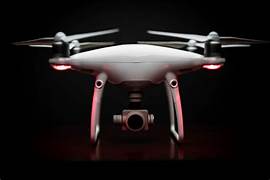The Evolution of Drone Batteries: Unlocking Extended Flight Durations
Drones have transformed numerous industries, including surveillance, delivery services, agriculture, and search-and-rescue operations. However, one persistent challenge limiting their potential is restricted flight time. Battery technology plays a crucial role in overcoming this limitation. Recent advancements are reshaping drone operations, offering solutions that promise longer and more efficient flights.
Battery Technologies for Drones
LiPo and Li-Ion batteries are the dominant power sources in the drone industry, each offering unique advantages. LiPo batteries are known for their lightweight design, high discharge rates, and fast charging capabilities. These features make them suitable for high-performance applications such as drone racing and professional aerial photography, where quick bursts of power and agile flight are essential. However, they tend to have a shorter lifespan and are sensitive to overcharging, which can cause swelling and reduced efficiency.
In contrast, Li-Ion batteries are gaining traction due to their high energy density, longer lifespan, and stable voltage output. These characteristics make them ideal for drones that prioritize extended flight durations over immediate power output. Their safer design and lower maintenance requirements make them a preferred choice for consumer-grade drones and long-range surveillance missions. However, they charge slower and are relatively heavier, which limits their application in scenarios requiring high-performance operations.
Choosing between LiPo and Li-Ion batteries depends on the intended use. While LiPo batteries are better for tasks that require powerful and agile flight, Li-Ion batteries excel in long-endurance operations where flight time is prioritized. As advancements continue, researchers are working to merge the strengths of both types, aiming for enhanced energy efficiency, faster charging, and improved durability to meet the evolving demands of the drone industry
Benefits of Extended Drone Flight Times
Extended drone flight times enable operators to cover larger areas without frequent interruptions. This proves invaluable in applications such as mapping, surveillance, and agricultural monitoring, where efficiency and comprehensive coverage are crucial. With longer flight durations, operators can complete tasks faster and with fewer takeoff and landing cycles.
Longer battery life significantly reduces the need for frequent battery replacements and recharges. This leads to substantial cost savings for businesses that rely heavily on drones for their operations. Additionally, fewer maintenance intervals help cut down operational expenses, making drone deployment more economical in the long term.
Drones with extended flight times contribute to enhanced safety, particularly in critical missions such as search-and-rescue operations and hazardous industrial inspections. Their ability to remain airborne for longer periods eliminates the need for frequent recoveries, reducing risks to human operators and increasing operational effectiveness in dangerous environments.
The Future of Drone Battery Technology
The evolution of battery technology is set to revolutionize drone operations. As research continues, we can expect more breakthroughs in lightweight, high-capacity, and sustainable energy storage solutions. Collaborations between battery developers and drone manufacturers will further accelerate these advancements.
.png)






Leave a Comment
Your email address will not be published. Required fields are marked *